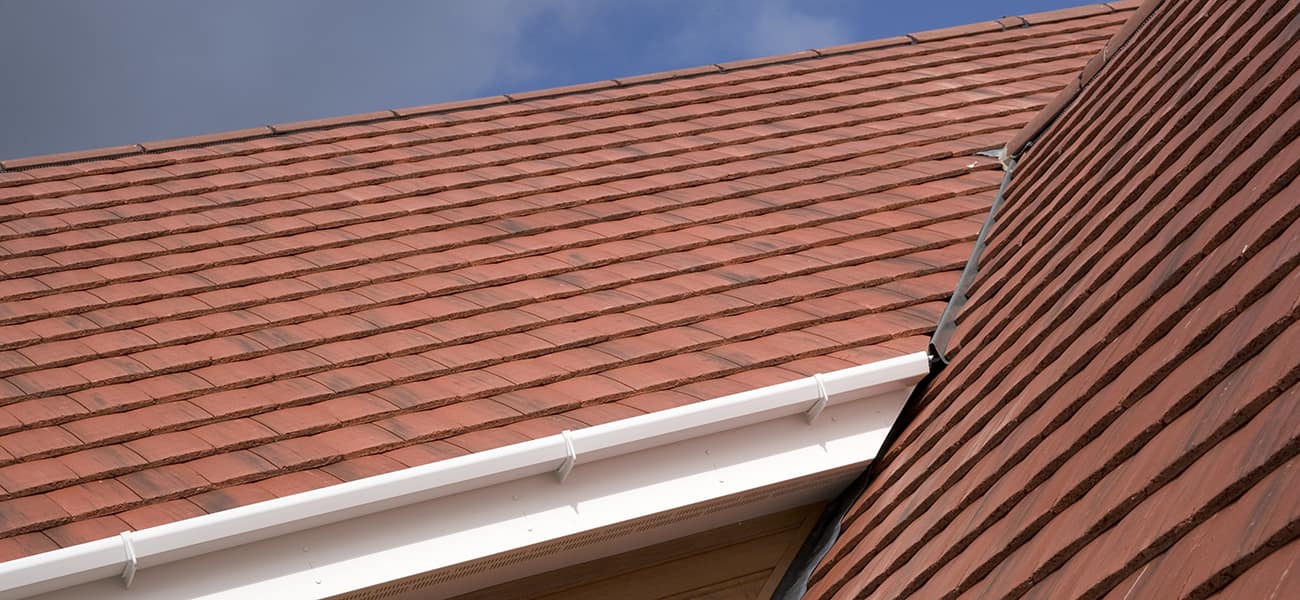Pitched roof condensation: Assessing the risk of, and preventing, condensation in existing pitched roofs


Condensation in existing pitched roofs is a common occurrence. While very small amounts of condensation are, in fact, normal and nothing to worry about, more severe cases of pitched roof condensation can be extremely problematic, leading to damp, mould and potential structural issues.
So what causes pitched roof condensation, why does it become a problem and what solutions are available? Let’s look at the issue in more detail.
What is pitched roof condensation?
Many building owners will have seen the effects of condensation on the inside of windows and as damp patches or even mould on the ceilings, but many may not be fully aware of what condensation is and what causes it.
Put simply, warm air can hold invisible water vapour, but water vapour turns back into water when the temperature drops below the dew point, the point at which the air becomes saturated.
Pitched roof condensation occurs when some of the warm, moist air that is generated in the living areas of a building makes its way into the loft via cracks, light drops, pipes and poorly sealed loft hatches. It diffuses through existing materials and condenses when it hits cold surfaces such as the underside of the roofing felt or underlay. Water can then run down the underside of the felt or underlay, track down the roof timbers and drip onto the ceilings.
Kevin Taylor, Training and Technical Support Manager at Marley, explains: "Understanding the risk of roof condensation is crucial for maintaining the integrity of a building.” As the moisture from condensation builds up, it can cause damage to structural elements, as well as cause issues such as damp and mould.
He warns: “Unchecked, condensation can lead to serious structural issues and could harm the wellbeing of occupants.”
Assessing the risk of pitched roof condensation in pitched roofs and prevention
Risk assessment and prevention of pitched roof condensation can be complicated, with factors including:
- The type of roof covering
- The type of underlay used
- How well the ceiling is sealed
- How much moisture is expected in the rooms below
- The position of the insulation in the roof
In new buildings, all these factors will form part of the design to minimise the risk of pitched roof condensation in line with BS 5250:2021 Management of Moisture in Buildings, which provides guidance on how to meet Building Regulations F on ventilation and C on resistance to moisture. However, for existing roofs with ‘normal’ ceilings (i.e., not classed as well-sealed) and condensation issues, what checks and solutions should be made through the winter months?
- Cold roof construction: If the loft is not used as a habitable room, then the chances are that the roof will be a cold roof construction, with the insulation laid at ceiling level between the joists. Often, the insulation is in the form of a mineral fibre quilt, and it has become common to top up this insulation to minimise heat loss and to meet the current building regulations (Part L). However, to avoid pitched roof condensation in cold roofs, it is important to check that there are no missing sections of insulation which could cause cold spots, that insulation is not blocking any ventilation at the eaves and that any excess insulation is removed from the loft to ensure it is not blocking the airflow across the roof.
- Warm roof construction: If the loft is used as a habitable room, it will have warm roof construction, with insulation between and/or above the rafters. Condensation in warm roofs tends to be interstitial which means it occurs within the insulation, and can therefore be more difficult to identify. Ventilation in accordance with BS 5250 is key to avoiding pitched roof condensation in warm roofs – warm roofs will need to be counter battened and ventilated at low and high level, using a combination of eaves vent systems, ventilation tiles and vented dry ridge systems.
The role of eaves and ridge ventilation in preventing pitched roof condensation
Eaves and ridge ventilation systems are designed to improve airflow through a roof space and help prevent pitched roof condensation. Kevin explains: “The right choice of eaves and ridge ventilation will depend on the roof span and design.” These systems can also be combined with breathable underlays and ventilation tiles for increased condensation control.
- Eaves-to-eaves ventilation: BS 5250 states that eaves-to-eaves ventilation is acceptable for roofs with spans of 10m or less or for roofs below 35 degrees. However, various factors can result in eaves-to-eaves ventilation not being effective at preventing pitched roof condensation – for example, poorly installed insulation blocking eaves ventilation and lofts used as storage spaces becoming cluttered. In the latter situation, ensure that the loft is decluttered or at least minimised to allow the crossflow of air between the eaves. If no dedicated eaves ventilation is in place, then retrofitted tile vents may need to be fitted.
- Eaves to ridge ventilation: BS 5250 states that for roofs with spans greater than 10m or for roofs above 35 degrees, eaves ventilation should be supplemented with high-level ventilation, equivalent to 5mm across the length of the ridge. Again, check the eaves ventilation is not blocked and check whether a dry ridge system has been used (in which case the underlay at the ridge should be set down from the apex by a few millimetres on each side) or whether the ridge tiles are bedded in mortar. If it is the latter, then it may be necessary to retrofit tile vents at a high level.
The role of underlays in preventing pitched roof condensation
The type of roofing underlay and its condition should also be considered when assessing the risk of pitched roof condensation. Identifying what type of underlay has been used on an existing roof can be difficult, but generally, the underlay will be bitumen or plastic based.
Older roofs may still be fitted with bitumen-based felt. It is important to note that this type of underlay is classed as non-breathable. Other, more modern, plastic-based underlays may also be classed as non-breathable. In both cases, eaves-to-eaves ventilation or, ideally, eaves-to-ridge ventilation must be in place to disperse and remove water vapour from the roof.
Kevin notes that vapour-permeable underlays have become the type most fitted in the last thirty or forty years. “These underlays have micro-pores woven into them, which are small enough to stop water droplets passing through them, should any rainwater get into the roof, but are large enough to allow water vapour to pass through them from below, and out through small air gaps in the roof tiles or natural slates,” he explains. In most cases, additional ventilation at the eaves, and in some cases, the ridge, is recommended by the manufacturer of the underlay and/or roof covering.
Air permeable underlays have been in the market for about twenty years. The micro-pores are slightly larger, which means more air passes through them than a vapour-permeable underlay, so no additional ventilation is needed (if installed to the relevant BBA certification) but may be more prone to water passing through them, especially if the underlay has been left exposed to heavy rain or freeze-thaw conditions.
Kevin warns: “it is not always easy to spot the difference between, air-permeable, vapour permeable and non-breather underlay from inside the roof.” He suggests that if there is any doubt, treat the underlay as a non-breather and ventilate accordingly. If it can be established that an air-permeable membrane has been installed, then it may be acceptable to fill the eaves with insulation.
Dealing with pitched roof condensation in pitched roofs
Whatever the roof construction, it is recommended that a survey of the roof inside and out is carried out by a reputable roofing contractor or other competent person when tackling pitched roof condensation issues. The technical departments of the manufacturers that supplied the underlay, roof covering and roofing accessories may also be a good source of information and advice.
Marley’s technical team is available to answer questions and provide solutions for condensation in existing pitched roofs. To find out more, or to discuss your situation in more detail, get in touch.